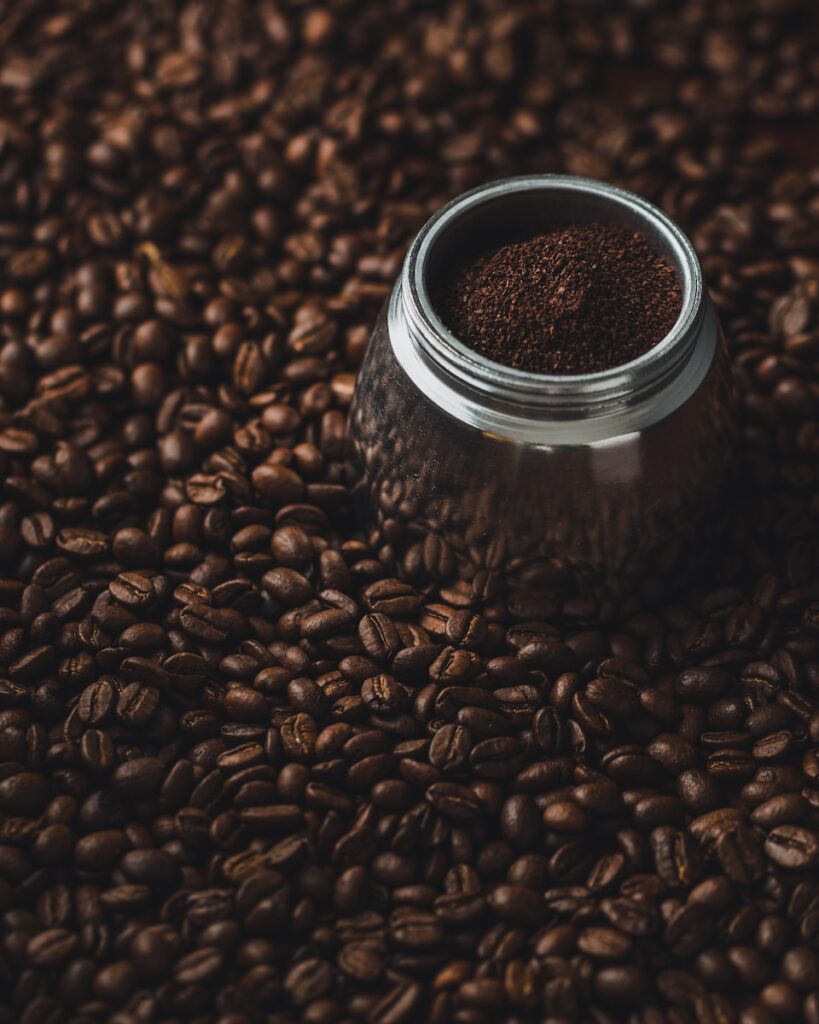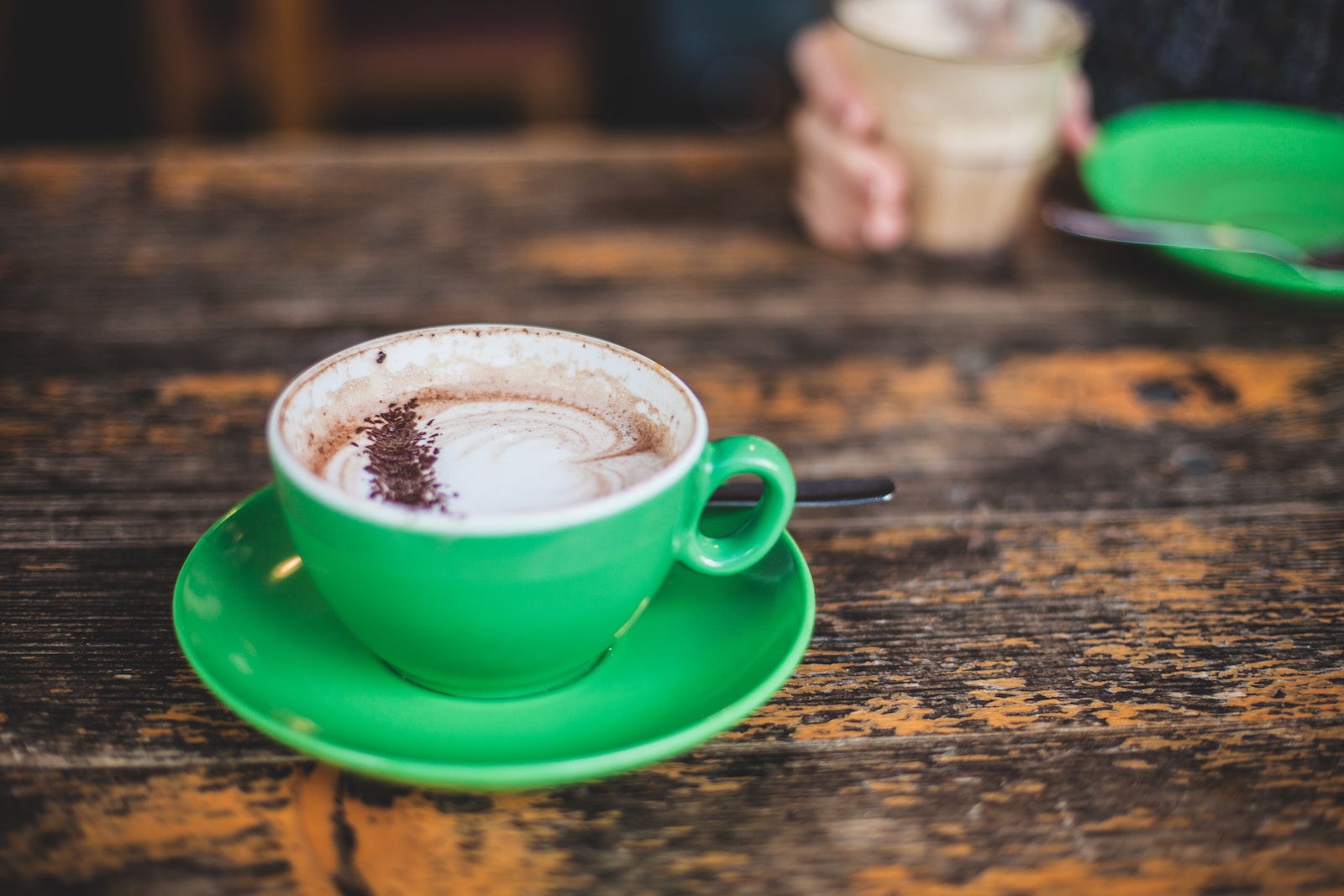Do you find yourself craving that caffeine boost, relying on it to get through those never-ending work meetings or late-night study sessions? If so, then grab your favorite mug because today we’re diving into the fascinating world of coffee and its energizing superstar: caffeine.
From brewing techniques to chemical reactions, join us on this aromatic journey as we uncover the secret chemistry behind every sip of your beloved morning elixir. Get ready for a stimulating blend of science and java that’s sure to leave you buzzing with knowledge!
Introduction to Coffee and Caffeine

Coffee has been a staple in many cultures for centuries, and it is estimated that over 2.25 billion cups of coffee are consumed worldwide every day. But have you ever wondered what makes this beverage so popular? The answer lies in its main ingredient – caffeine.
Caffeine is a natural stimulant found in coffee beans, tea leaves, cocoa beans, and other plants. It belongs to a group of compounds called methylxanthines and is known for its ability to stimulate the central nervous system and increase alertness. In fact, caffeine is often referred to as the most widely used psychoactive drug in the world.
One of the reasons why caffeine has become such an integral part of our daily lives is its effects on our body. When we consume caffeine, it binds to adenosine receptors in our brain which blocks the sleepy signal sent by the neurotransmitter adenosine. This leads to increased brain activity and helps us stay awake and alert.
Aside from keeping us awake, caffeine also has many other benefits. It can improve mental focus and cognitive function, making it popular among students and professionals looking for a quick boost in productivity. Studies have also shown that moderate consumption of caffeine can decrease the risk of certain diseases such as type 2 diabetes, Parkinson’s disease, Alzheimer’s disease, and liver cirrhosis.
Historical Background of Coffee and Caffeine
Coffee is an integral part of our daily lives, whether we drink it to kickstart our mornings or enjoy a warm cup with friends and family. However, the history of coffee and caffeine dates back centuries ago.
Coffee originated in Ethiopia, where legend says that a goat herder named Kaldi noticed his goats becoming more energized after eating berries from a particular tree. Curious about this phenomenon, Kaldi tried the berries himself and discovered their stimulating effects. This discovery spread to neighboring countries and eventually reached Yemen, where coffee cultivation began in the 15th century.
From there, coffee became popular throughout the Islamic world for its stimulating properties during long prayer sessions. In the 16th century, coffee was introduced to Europe through trade routes and quickly gained popularity among the nobility. It wasn’t until the 17th century that cafes started popping up in major European cities, serving as social gathering places for intellectuals and artists.
As Europeans began colonizing different parts of the world, they brought with them their love for coffee. This led to its cultivation in various regions such as South America and Southeast Asia. Today, Brazil is the largest producer of coffee in the world.
But what exactly gives coffee its stimulating effects? The answer lies in its key ingredient – caffeine. Caffeine is a naturally occurring substance found in many plants including tea leaves, cacao beans (used to make chocolate), and of course, coffee beans.
Chemical Makeup of Coffee Beans
Coffee is much more than just a mere beverage – it is a complex and fascinating chemical concoction. The magic of coffee lies in its chemical makeup, which gives it its unique taste, aroma, and stimulating effects. In this section, we will delve deeper into the chemical components that make up a humble coffee bean.
Firstly, it is important to understand that there are two main types of coffee beans – Arabica and Robusta. Arabica beans are considered to be superior in quality, making up about 70% of the global coffee production. They have a more delicate flavor with lower caffeine content compared to Robusta beans which have a strong, bitter taste and higher caffeine levels.
The main component of coffee beans is water – typically making up around 60% of the total weight. When roasted at high temperatures (around 200°C), water evaporates from the beans to give them their final moisture content for brewing. During this process, various chemical reactions take place that result in the distinct aroma and flavors associated with different brews.
One group of chemicals responsible for these characteristic aromas are volatile compounds such as aldehydes, ketones, and esters. These compounds contribute to the fruity or floral notes found in different types of coffee. For example, ethyl formate has been identified as one of the key chemicals giving coffee its strawberry-like scent while eugenol imparts a clove-like aroma.
How Caffeine is Extracted from Coffee Beans
The process of extracting caffeine from coffee beans begins with the harvesting and roasting of the beans. After roasting, the coffee beans contain numerous chemical compounds including caffeine, which gives coffee its energizing effect. However, drinking large amounts of coffee can lead to unwanted side effects such as jitters, restlessness, and insomnia. This is where the extraction process comes in.
There are several methods used for extracting caffeine from coffee beans, but the most common and efficient method is known as the solvent-based extraction method. This involves using a chemical solvent to dissolve the caffeine from the beans while leaving behind other desirable compounds that give coffee its taste and aroma.
One commonly used solvent is ethyl acetate, which is a natural compound found in fruits and vegetables that has been deemed safe for consumption by regulatory bodies such as the FDA. The first step in this process is soaking green (unroasted) coffee beans in hot water to soften them. The softened beans are then transferred to a rotating drum filled with ethyl acetate, where they are soaked once again.
As the ethyl acetate comes into contact with the beans, it dissolves caffeine molecules through a process called solvation. Solvation occurs when a solute (caffeine) dissolves in a solvent (ethyl acetate), forming a homogeneous solution. The duration of this soaking process depends on various factors such as bean quality and desired caffeine content.
Factors that Affect the Caffeine Levels in Coffee
Coffee is one of the most popular beverages around the world, and its caffeine content plays a significant role in its popularity. Caffeine is a natural stimulant found in coffee beans that give coffee its energizing effects. However, not all coffees have the same caffeine levels, and several factors can affect the amount of caffeine in your cup of joe.
1] Coffee Bean Variety:
The type of coffee bean used has a direct impact on the caffeine levels in coffee. Arabica beans, which are widely considered to be higher quality and more flavorful, tend to have less caffeine compared to Robusta beans. On average, Arabica beans contain about 1-1.5% caffeine, while Robusta can contain 2-2.5%. Therefore, if you want a stronger dose of caffeine, opt for Robusta beans.
2] Roasting Level:
The roasting process also affects the caffeine levels in coffee significantly. The longer the roasting time, the darker and stronger the flavor will be due to chemical changes happening inside the bean as it heats up. Contrary to common belief, darker roast does not necessarily mean more caffeine; in fact, lighter roasts usually retain more of their original caffeine content than dark roasted ones.
3] Brewing Method:
How you brew your coffee affects not only its taste but also its caffeine levels too! Espresso-based drinks such as lattes and cappuccinos have lower amounts of caffeine per serving compared to drip or pour-over methods because they use less water during extraction. Cold brew and French press methods can also have higher caffeine levels due to their longer brewing time.
4] Serving Size:The amount of coffee you consume plays a significant role in the overall caffeine intake. A standard cup of coffee is around 8 ounces, which typically contains about 95-200 mg of caffeine, depending on the factors mentioned above. However, if you opt for a medium or large cup size or add shots of espresso, your caffeine intake will increase accordingly.
5] Water Quality:The quality of water used to brew your coffee can also affect its caffeine levels. Hard water with high mineral content tends to extract more caffeine from the beans compared to soft water.
6] Grinding Level:
The level at which coffee beans are ground can impact its caffeine levels too! Finely ground beans have more surface area, allowing for better extraction compared to coarsely ground beans.
7] Age of Coffee Beans:Like any other food product, the freshness of coffee beans plays a role in their flavor and caffeine content too! Over time, coffee beans lose their flavor and some of their caffeine content; therefore, using freshly roasted beans will provide a stronger dose of caffeine compared to older ones.
Health Benefits of Consuming Coffee and Caffeine
Coffee is one of the most popular beverages in the world, loved for its rich aroma and energizing effects. Its key ingredient, caffeine, is a stimulant that has been consumed by humans for centuries. While coffee and caffeine offer many health benefits, they also come with potential risks that should be considered.
1] Boosts Energy and Alertness:
Caffeine is known to increase energy levels by blocking the effects of adenosine in the brain, a neurotransmitter that promotes drowsiness. This leads to improved wakefulness and alertness, making it easier to concentrate and stay productive throughout the day.
2] Improves Physical Performance:
Caffeine stimulates the production of adrenaline, known as the “fight or flight” hormone, which prepares the body for physical activity. This can enhance athletic performance and reduce fatigue during exercise.
3] May Lower Risk of Certain Diseases:
Several studies have shown that regular coffee consumption may lower the risk of diseases such as type 2 diabetes, liver disease, Parkinson’s disease, and certain types of cancer. These beneficial effects are believed to be due to the antioxidants found in coffee.
4] Enhances Mood:
Caffeine has been shown to boost mood by increasing dopamine levels in the brain – a chemical associated with pleasure and motivation. It can also improve cognitive function and elevate mood in people with depression.
Conclusion: Why Understanding the Chemistry of Coffee
As we have learned, coffee is much more than just a delicious beverage that kickstarts our day. It has a complex chemistry and intricate flavor profile that is affected by various chemical reactions and compounds. By understanding the chemistry behind coffee, we can appreciate this beloved drink even more.
Firstly, understanding the chemistry of coffee can help us to make better brewing decisions. As mentioned earlier, different brewing methods can affect the final flavor of our coffee due to varying extraction processes. With knowledge of which compounds are extracted at different temperatures and pressures, we can adjust our brewing techniques to achieve our desired taste.
Moreover, knowing about the chemistry of coffee allows us to fully savor and enjoy its unique flavor profile. The combination of acids, sugars, oils, and other compounds creates a rich and complex taste that varies from bean to bean and region to region. By being aware of these chemical components, we can distinguish between different flavors in our cup of coffee and appreciate the nuances within each sip.
Additionally, awareness of the caffeine content in coffee is important for both our health and enjoyment. Caffeine is one of the most well-known stimulants in coffee responsible for keeping us alert and awake. However, it also affects each person differently depending on their body’s reaction to it. By understanding how caffeine interacts with our bodies on a chemical level, we can make informed choices about how much caffeine we consume in a day.







